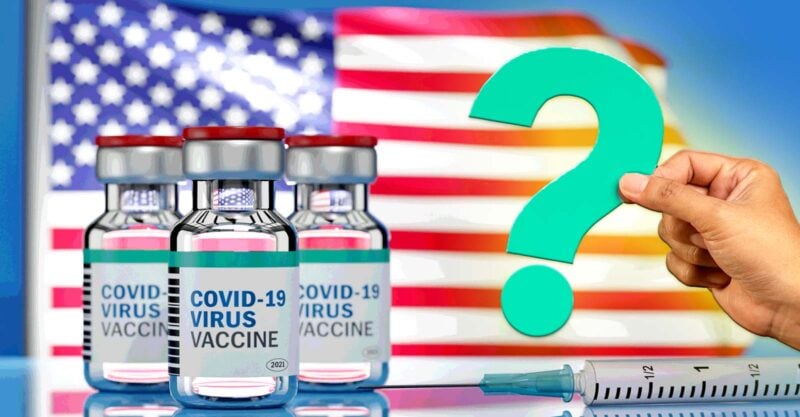
A new report by Canadian researchers challenges widely cited claims that Covid-19 vaccines saved millions of lives in the US.
The authors of a preprint paper published this week by Correlation, a Canadian non-profit research organisation, argues that the claims are based on modelling studies that use flawed assumptions resulting in “fantastic and unverifiable” conclusions.
For example, Peter Hotez – in interviews and in his 2024 congressional testimony – cited a 2022 study by Meagan Fitzpatrick, touting 3.2 million lives saved by the vaccines. Legacy media latched onto Fitzpatrick’s and Hotez’s claims, widely repeating and amplifying them.
But according to all-cause mortality experts Denis Rancourt and Joseph Hickey, Fitzpatrick used a “counterfactual theoretical calculation” that yielded incorrect assumptions about infection fatality rates and vaccine efficacy.
In their new paper, Rancourt and Hickey argue that counterfactual calculations like those used by Fitzpatrick and other researchers can lead to dangerous conclusions and shouldn’t be used to drive policy.
“False claims accepted by government officials and their advisers can have a disastrous effect on public health policy and society,” they said.
They also reassess the claims made in several studies that estimate the number of lives saved by Covid-19 vaccines, and challenge the validity of the studies’ underlying assumptions.
Counterfactual models are designed to estimate the outcomes of a given intervention – in this case, the Covid-19 vaccine – if the intervention hadn’t occurred. To do that, researchers project an alternative scenario.
By design, these models are based on a series of assumptions that Rancourt and Hickey say range from tenuous to outright wrong. When researchers use counterfactual models to estimate lives saved by the vaccine, they must first estimate how many Covid-19 infections would have occurred during the time in question had there been no vaccines, and then how many of these infections would have resulted in death.
To calculate the infection rate over time, researchers use another model, “contagion dynamics modelling,” which has its own complexities and uncertainties, according to Rancourt and Hickey.
To estimate Covid-19 infections and averted deaths, researchers relied on the vaccine efficacy rates from clinical trials. But those trials claimed extremely high efficacy rates that Rancourt and Hickey called “contrived, questionable and non-transparent.”
Several counterfactual modellers used similar inputs to conclude that vaccines had a tremendous impact, though their estimates of that impact varied.
In her blog post, Fitzpatrick concluded that Covid-19 vaccines prevented 3.2 million deaths, 18.5 million hospitalisations and 120 million infections, $1.15 trillion in medical costs by the end of November 2022.
Using the same approach, the authors of an article published in September 2022 in The Lancet found that the vaccines had prevented 14.4 million deaths globally by December 2021.
A study published in July 2025 in JAMA Health Forum used sero-prevalence data from positive Covid-19 deaths, rather than the modelling data used by the other authors, to estimate infection rates, but also used data from clinical trials to determine efficacy.
The study’s lead author Dr John P. A. Ioannidis and colleagues calculated that the vaccines saved 2.5 million lives globally by 2024 – an estimate that is 10 times lower than those of Fitzpatrick or the authors of The Lancet study.
Rancourt argued in a previous paper that even Ioannidis’ more limited estimates were a severe overestimation based on flawed inputs to the model. After analysing the JAMA Health Forum paper, Rancourt found “no reason to believe” that the Covid-19 vaccines saved any lives.
“This whole industry of counterfactual calculations is what I would call ‘politics by science,’” Rancourt said.
“It is equivalent to saying, ‘I’m going to argue that the intervention that we made had a huge benefit without having any empirical evidence to support that claim,’” he said.
According to Rancourt, the researchers are simply plugging Big Pharma’s data into a formula, which then shows that millions of lives were saved.
He said the counterfactual scenarios benefit from the fact that, in places like the US, which collects a lot of public health data, vaccination rates were so high that there is no unvaccinated group to use as a comparison.
“These are contrived studies,” he said.
Excess mortality data – which is reliable, measured, real data – allow for a more accurate estimate of deaths averted by the Covid-19 vaccines, Rancourt and Hickey said.
The authors of a 2022 study published in The Lancet analysed mortality data and found results that were far more ambiguous than those produced by counterfactual models.
“The magnitude of the impact of vaccination roll-out on deaths was unclear,” the study concluded.
In their paper, Rancourt and Hickey examined the counterfactual models and the claims those models made about deaths averted over time. They discovered that the models display large peaks in lives saved immediately after the vaccine and booster rollouts.
In other words, according to the models, the Covid-19 virus became highly virulent immediately after the vaccines or boosters were rolled out, so the vaccines likely saved many lives.
However, Rancourt said there was no reduction in excess mortality following the rollouts in 2021 and 2022. Empirical data indicate that excess mortality increased in 2020 and then held steady during the following two years.
To believe the models, Rancourt said, “You’d have to believe these incredible coincidences where the pathogen suddenly became more virulent.”
However, there is no evidence of that. “There’s no firm demonstration that the virus became five or 10 times more virulent at a certain time, a year into the declared pandemic, after there was a lot of excess mortality in 2020,” he said.
The models require people to believe that the pathogen was at a very deadly point when the vaccination campaigns occurred, and only at those times.
Researchers who use the counterfactual models are effectively claiming that, without the vaccine, Covid-19 “would have produced death peaks at a rate far beyond anything that is known in recorded history,” Rancourt said.
He said it’s outrageous that such flawed studies are published in top journals, but it proves that the peer review process has been corrupted.
“The medical establishment paid by pharma are just worker bees trying to find ways to please their masters by inventing these back propagation methods called counterfactual calculations or simulations. It’s garbage science.”
- A Tell Media report / By Brenda Baletti – a senior reporter for The Defender






